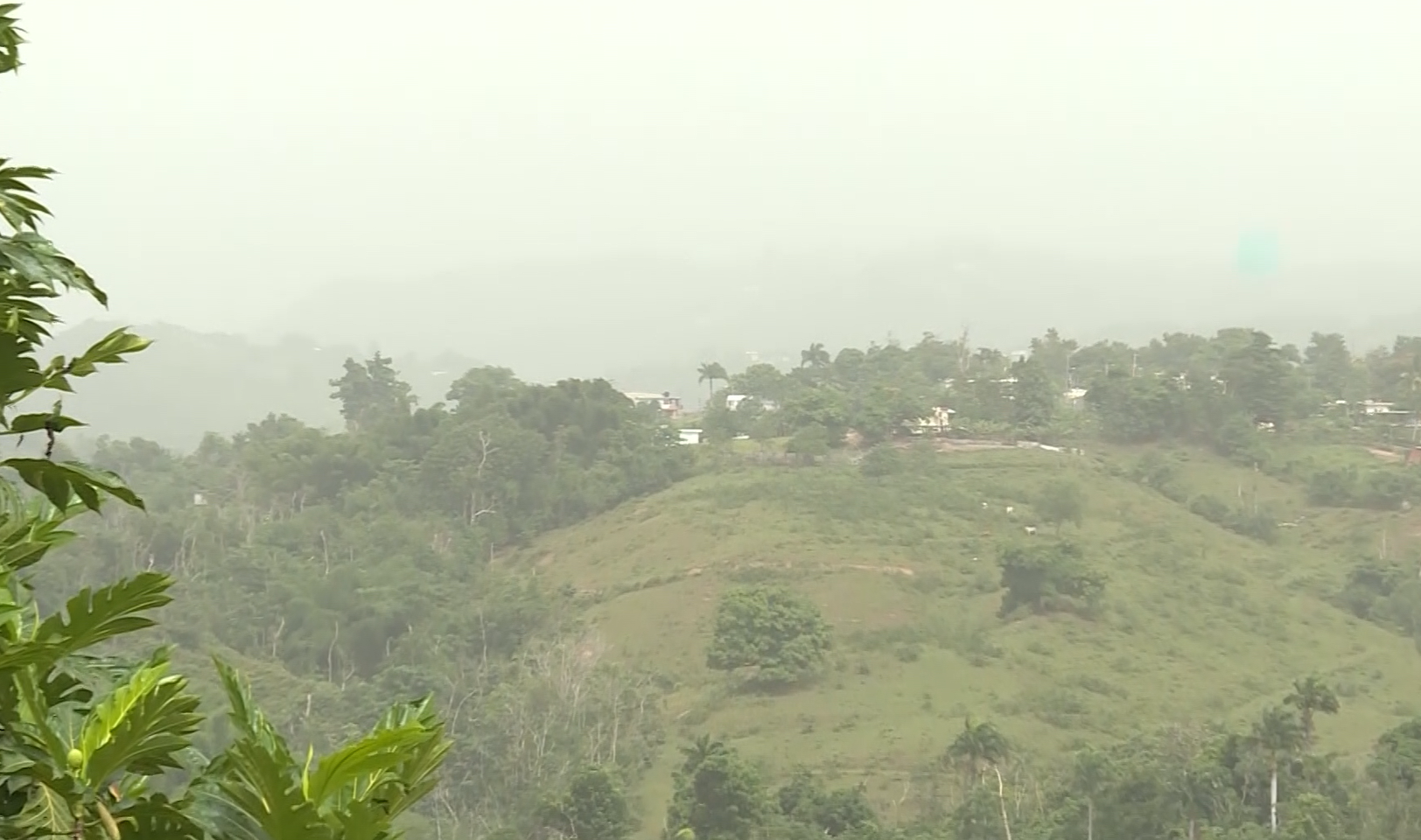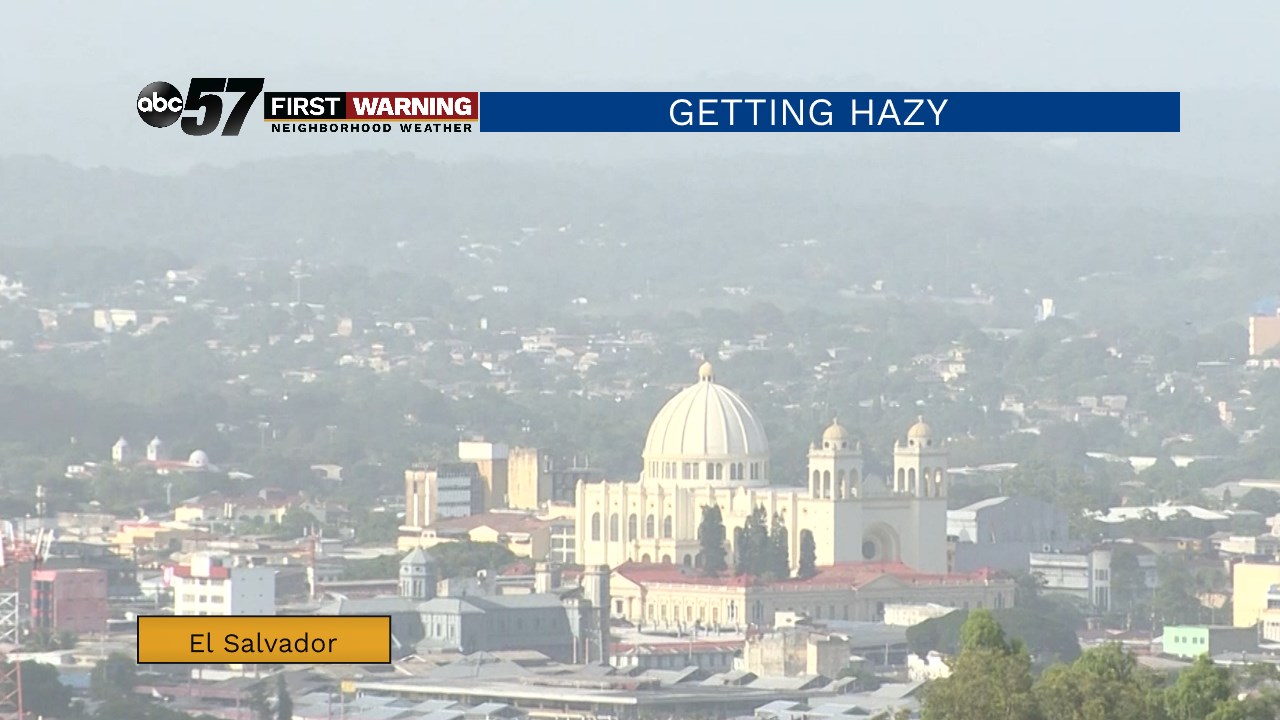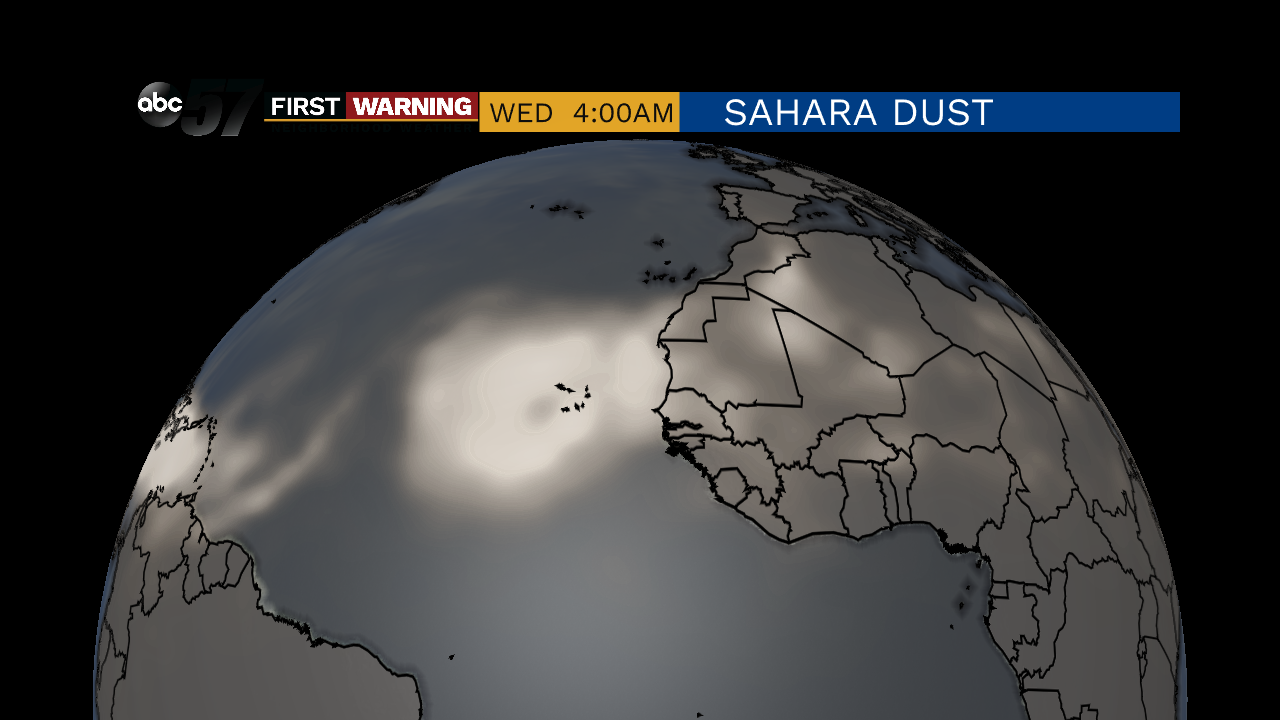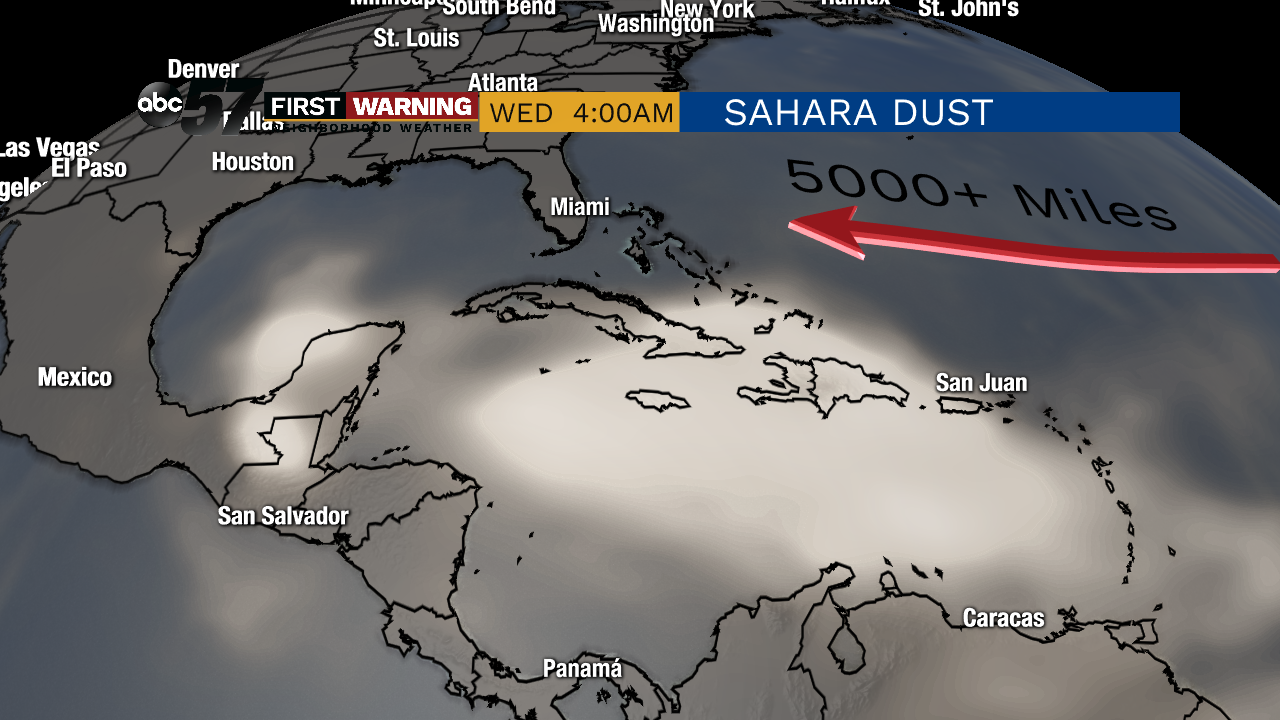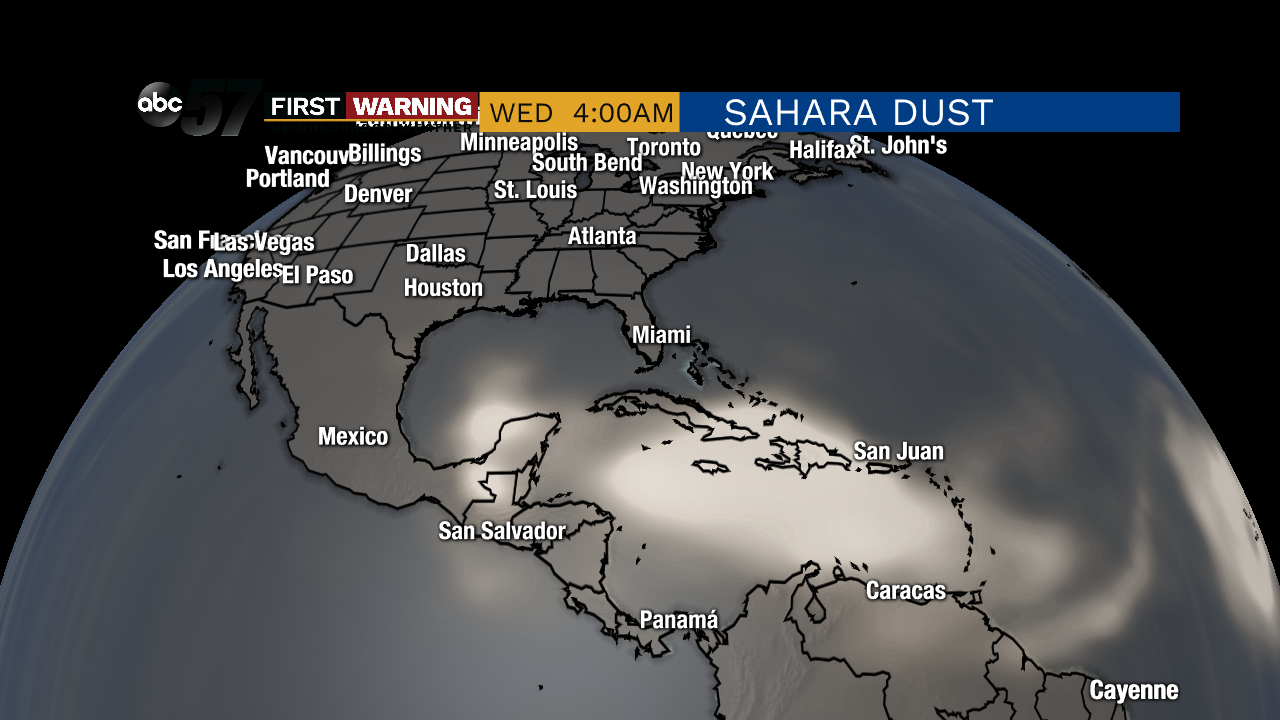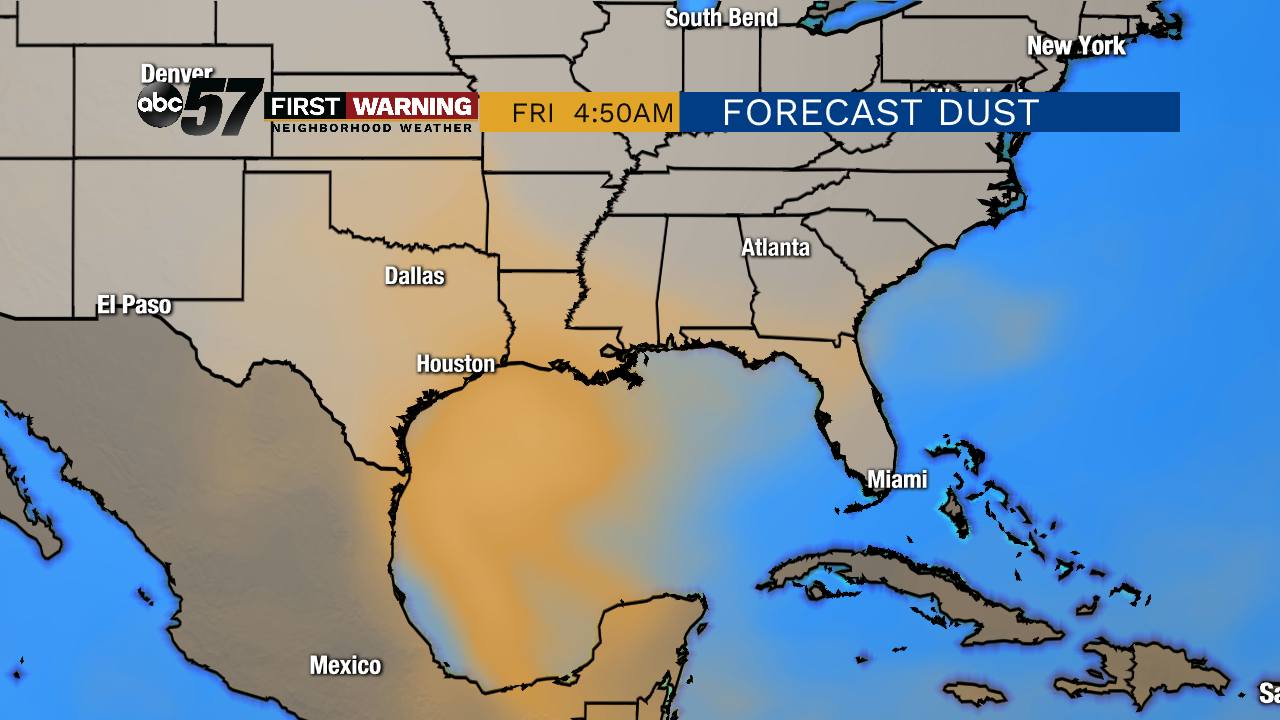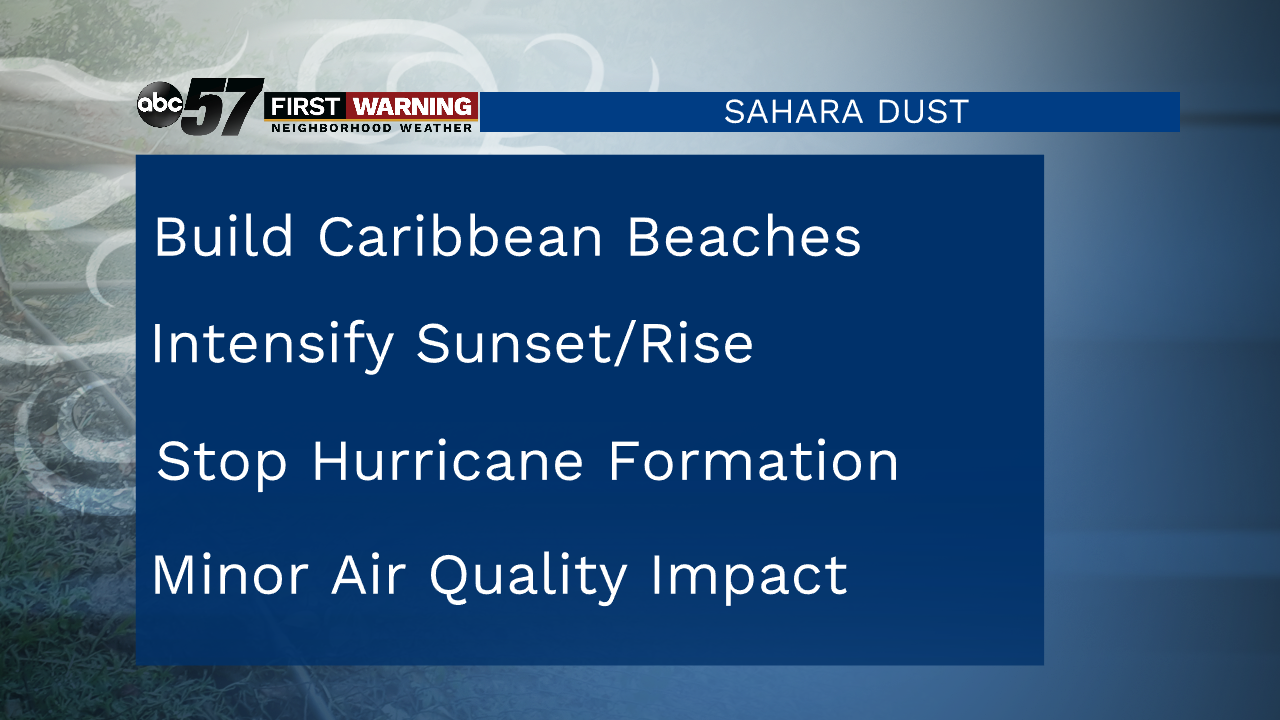Getting hazy: Saharan dust will blow towards Michiana this weekend
Sand blown off the west coast of Africa is currently suspended in the air over the Caribbean, and it could travel towards Michiana this weekend.
The hazy conditions were first noticed in the Caribbean, like in this photo from Puerto Rico.
Now, dust has traveled into the Gulf Coast, and countries like El Salvador are seeing the haze.
Satellite imagery helps tell the tale of Sahara dust. Wednesday morning, you can still see large plumes of sand being blown from the Sahara Desert over the Atlantic Ocean.
Sand can travel over five thousand miles and reach parts of the Caribbean or the United States. As it travels, large pieces of sand usually fall into the ocean, but smaller particles are leftover in the air. These small particles are the "dust" or haze that we see hanging in the atmosphere.
Currently, the dust is in the air over places like Puerto Rico, Dominican Republic, and Haiti. The dust is still on the move.
By Thursday and Friday, the dust will likely hang over southern states like Texas and Louisiana. Later this weekend, dust could travel all the way to states like Indiana.
Are we in danger from this? There are some impacts from Sahara dust, but it likely won't harm you. If you have allergies or asthma, you could notice some minor impacts to air quality. If you are already wearing a mask because of COVID-19, this will help protect you if you are concerned about breathing in the dust.
Sunsets and sunrises with the dust in the atmosphere will look more intense or give them unique coloration. The new sand is often helpful in naturally rebuilding Caribbean beaches. Dust in the atmosphere helps suppress moisture, which can in turn stop hurricane or tropical storm formation.
This isn't a new phenomenon. What is unique about 2020 is the amount and location of dust in the atmosphere. Usually sand travels higher in the air, and we can't see it. This year, the dust is much closer to Earth's surface.
This unique hazy situation could lead to some interesting weather photos, so get your cameras ready, and feel free to share with us.















